You are here
New Releases
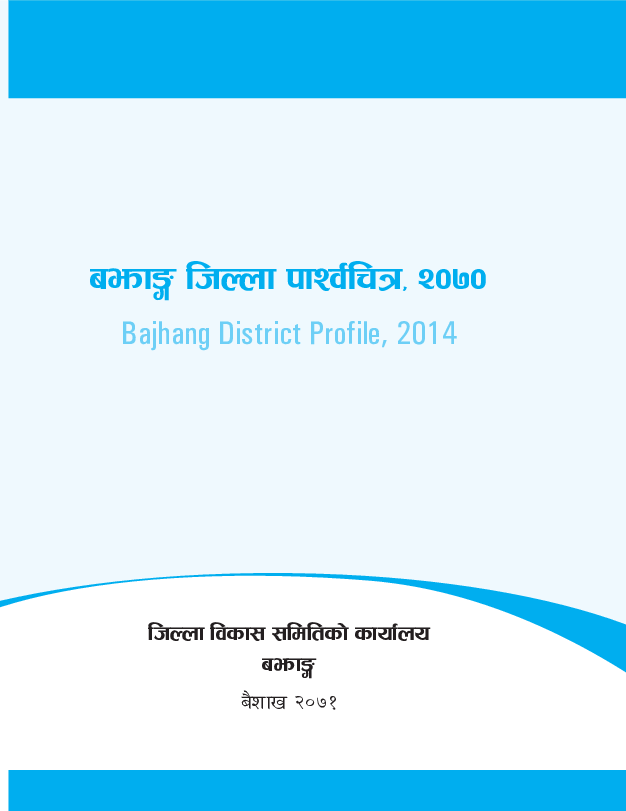
Bajhang District Profile 2014
The District Profile 2014 of Bajhang was prepared by collecting the sector-wise information available in the district, analyzing the data and district situation and holding consultations with the local government agencies and stakeholders. It aims to strengthen the existing district database system. The District Development Committee, government line agencies and development partners have started using the data and information contained in the profile in their planning processes. Prepared with UNFPA support, this document will help the local government agencies, development partners, researchers and scholars in formulating policies, collecting evidence and evaluating their programmes. It covers the following information of Bajhang:
• Geographical information
• Demographic situation
• Social information: Situation of women, children, people living with disabilities, and status of education and health
• Drinking water and sanitation situation
• Economic and employment situation
• Status of social services
• Agricultural, forestry and environment situation
• Disaster management situation
• Local resources
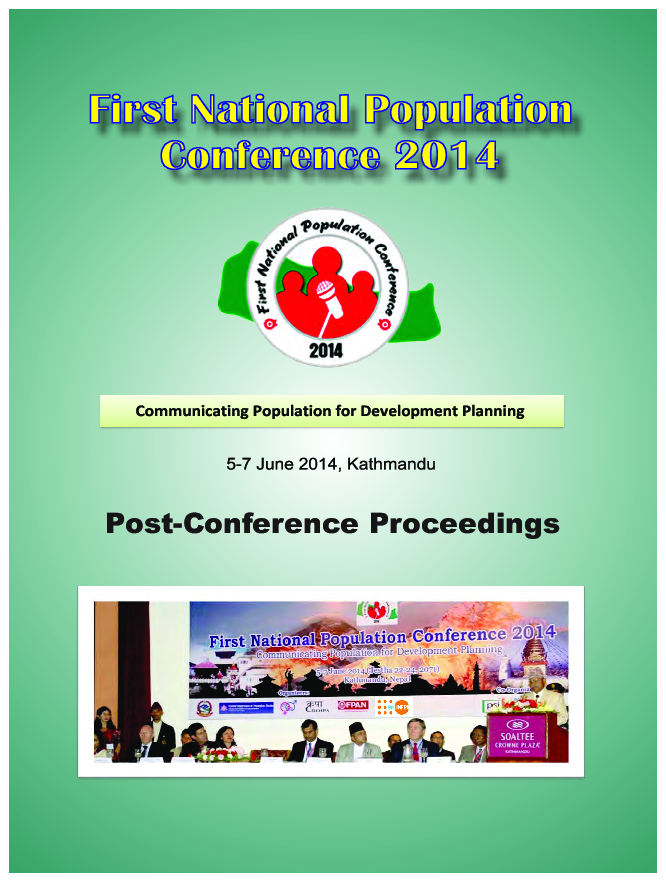
First National Population Conference 2014: Post-Conference Proceedings
The First National Population Conference 2014 was jointly organized by the Ministry of Health and Population (MoHP); Central Department of Population Studies/Tribhuvan University (CPDS/TU); Population Association of Nepal (PAN); Centre for Research on Environment, Health and Population Activities (CREHPA); Family Planning Association of Nepal (FPAN) and the Country Office of United Nations Population Fund in Nepal (UNFPA Nepal). Population Services International (PSI) and Marie Stopes International (MSI) were the co-organizers. A total of 108 papers selected by an Evaluation Committee were presented in 72 parallel, 8 plenary and 36 poster sessions around 15 relevant themes. The following section highlights key policy areas and recommendations that emanated from the findings of the papers presented and discussions held during the Conference.
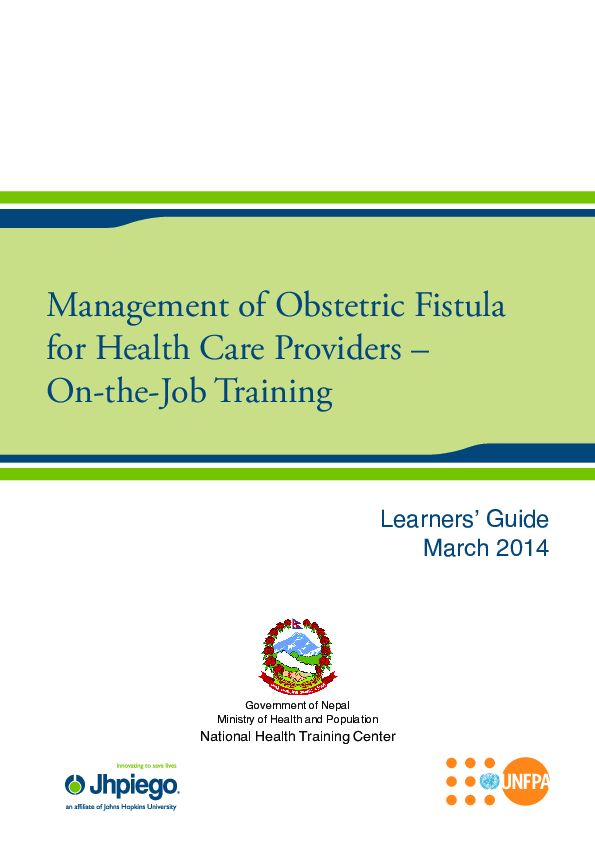
Management of Obstetric Fistula for Health Care Providers: Learners' Guide
Obstetric fistula is a devastating child birth injury that has been severely neglected, despite the traumatizing impact it has on the lives of affected women and girls. This publication is intended for learners, facilitators and supervisors to be completed using an on-the-job training approach either in their workplaces or in different facilities. With the training package, service providers are expected to have comprehensive knowledge about obstetric fistula on how to provide quality care.
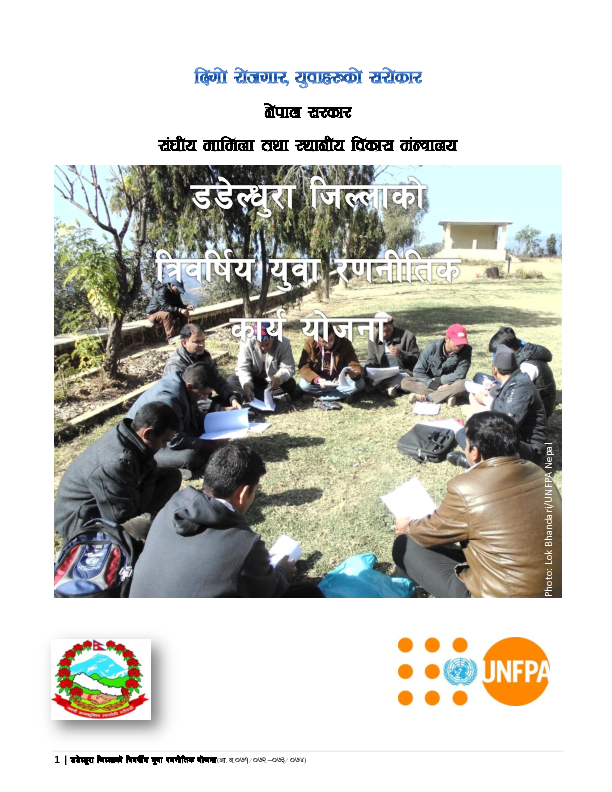
Three-year Youth Strategic Plan of Dadeldhura 2014-17
For the first time the District Development Committee, Dadeldhura, endorsed Three-year Youth Strategic Plan for 2014-17 with UNFPA support. This Strategic Plan was finalized by organizing rigorous consultation meetings among young people, government and non-government agencies working for youth, development partners and major political parties. This Strategic Plan is developed on the basis of the Local Self Governance Act 2055 (1999) and the National Youth Policy 2066 (2010). The overall objectives of this plan is to support youth-friendly development through the meaningful participation of young people in all spheres of development.
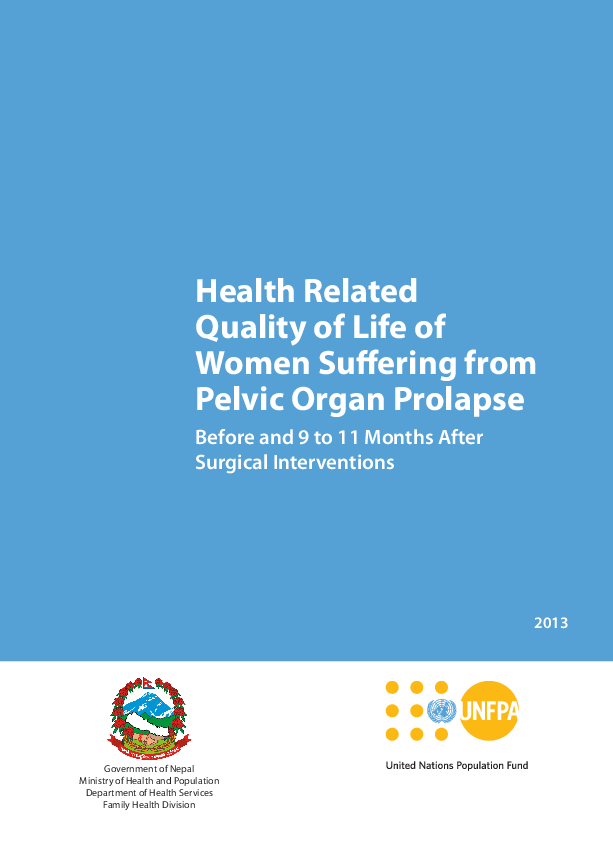
Health Related Quality of Life of Women Suffering from Pelvic Organ Prolapse in Nepal
This study demonstrates that surgical interventions have positive impact on the improvement of the health related quality of life of women who suffer from Pelvic Organ Prolapse (POP) or Uterine Prolapse. The effort of the government and the stakeholders for providing treatment in this regard has benefited the women of Nepal. However, surgical intervention alone will not be a complete solution in addressing the comprehensive needs. The information obtained from this study will help for future policy and planning interventions against POP programme in Nepal.
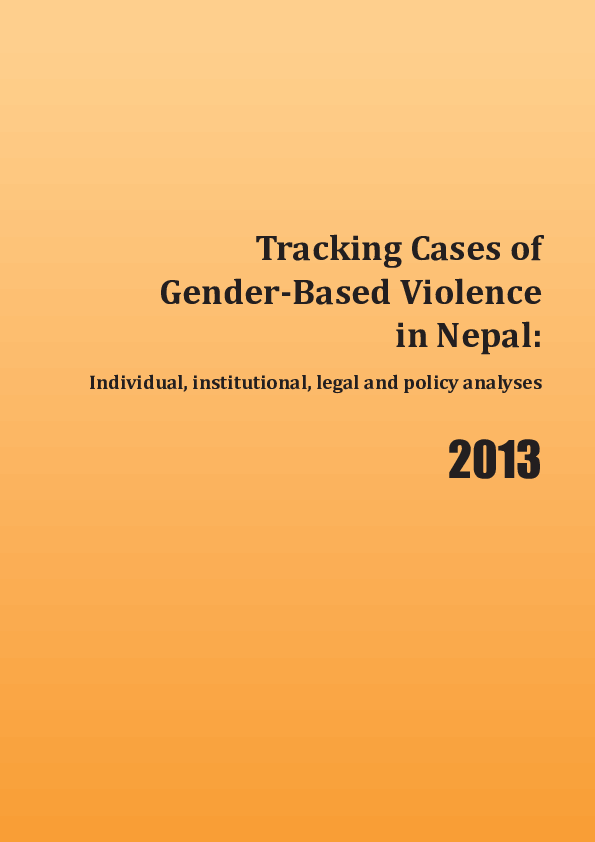
Tracking Cases of Gender-Based Violence in Nepal 2013
The overall purpose of this study was to map women's experiences of seeking care, support and redress when they have been the victims of gender-based violence (GBV) in Nepal, and thereby to identify barriers and opportunities to both women's care seeking, and to improving the policy and programmatic environment.

National Plan of Action for the Holistic Development of Adolescents
The National Planning Commission (NPC) launched a National Plan of Action (NPA) on the holistic development of adolescents to mark the second International Day of the Girl Child on October 4, 2013.
The National Planning Commission (NPC) launched a National Plan of Action (NPA) on the holistic development of adolescents to mark the second International Day of the Girl Child on October 4, 2013, which focused on ‘Innovating for Girls’ Education. Health (including SRH), Enabling and protective environment, Education and skills, Financial empowerment and livelihoods, Civic engagement and participation and Gender and social inclusion are the key areas outlined in this document.Acknowledging that adolescents (10 -19 years) are a group that requires focused attention to meet specific development needs, to help them understand their rights, and to engage them in addressing existing challenges, the government had envisioned and prepared this multi-sectoral NPA. An inter-ministerial task team was formed under the leadership of the NPC and was supported by UNFPA, UNICEF, CWIN, Save the Children, Plan Nepal, ILO, and the Consortium of organizations working for child participation. More than 2,000 adolescents and 1,000 adult stakeholders from all over the country were consulted during the drafting and finalization of the NPA.
(The document below is in Nepali)
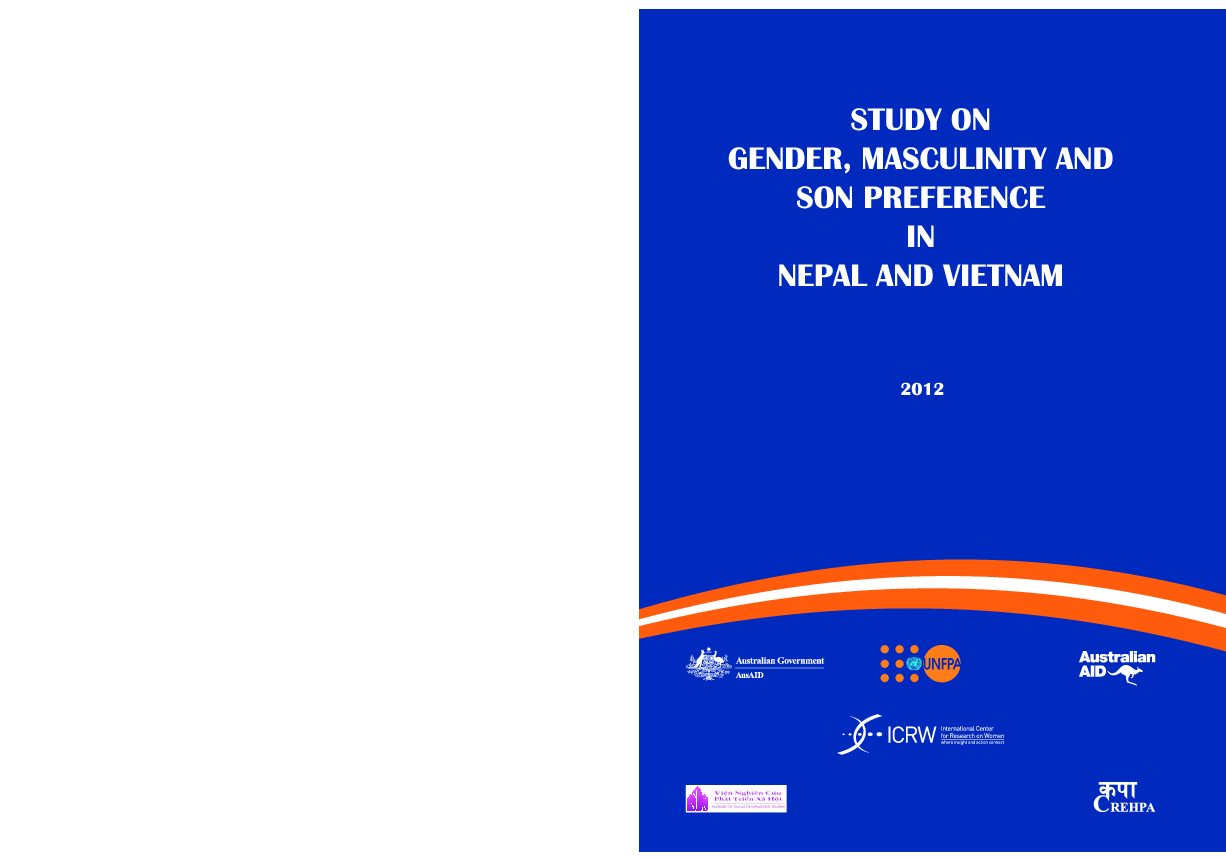
Study on Gender, Masculinity and Son Preference in Nepal and Vietnam
Strong son preference in parts of Asia has led to serious discriminatory practices towards girls and women, with disturbing effects on their status, health and development. The significant male surplus in some populations resulting from the excess of male births since 1980 has an impact on the sex ratios at birth and subsequently affected the dynamics of marriage in several regions of this continent. The lack of women available for marriage has created further discrimination through increased violence against women, trafficking, abduction, forced marriages, or sharing brides among brothers as different practices in different countries. Girls who are born also face discrimination in their lives through unequal opportunities for health care, education and fulfilling their aspirations.
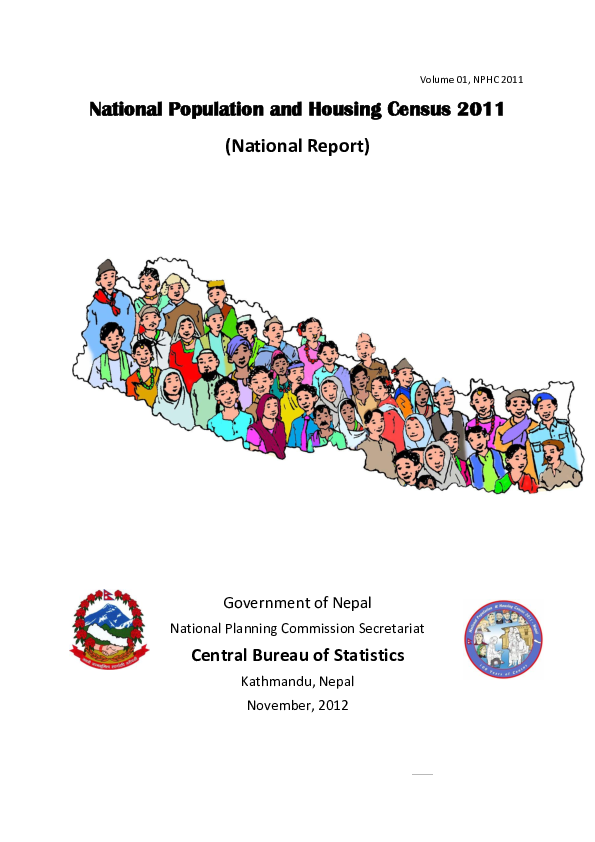
National Population and Housing Census 2011
National population and housing census 2011 (NPHC2011), marks a hundred years of census taking in Nepal. Nepal has been conducting population censuses almost decennially and the census 2011 is the eleventh. The first population census was conducted in 1911 A.D. (1968 B.S.). However, the census conducted in 1952/54 is considered to be the first modern census of Nepal introducing internationally comparable concepts, definitions and classifications. Computer processing was introduced for the first time in 1971 census using IBM 1401. NPHC 2011 carries special features of having scientific questionnaires, detailed EA maps for urban and Village Development Committees (VDC) maps for rural areas, ever most inclusive field staff, extensive publicity, independent observance by civil society, most economic operation based on domestic resources and most reliable data processing.

Nepal Demographic and Health Survey (NDHS) 2011
The 2011 Nepal Demographic and Health Survey (NDHS) provides up-to-date information on the population and health situation in Nepal. The 2011 NDHS is the fourth national Demographic and Health Survey conducted in the country. Repeated surveys allow for an analysis of trends over time. The survey is based on a nationally representative sample. It provides estimates at the national, ecological zone, developmental region, and in some cases, subregional levels.